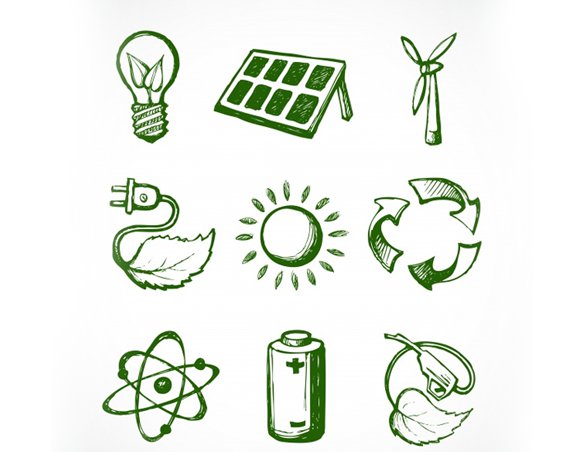Origin of renewable energy sources

Power of renewable energy
As we discussed in the previous article, the contribution of renewable energy to the global energy demand was 19% in 2013. Today, renewable energy sources account for 23% of the global electricity generation [2].
See the gap. Fossil fuels still provide 77% of the global electricity demand.
Think of how far away we are from our dream of 100% renewable energy.
Is it possible to replace fossil fuels with renewables 100%?
Prior to answer this question, let’s take a look at some real global energy facts.
- Global energy demand was around 17.5 TW in 2010.
- This figure would reach its milestone of 63 TW by next century (2100) according to the recent estimations [1].
- It seems to be a bullish jump by more than 45 TW.
Global energy demand is not something at rest but a rapidly increasing demand.
It is crystal clear that a single source of renewable energy cannot replace the demand for fossil fuels. Nothing to worry!
There are plenty of renewable energy sources around us. They can provide more than enough energy we need. Now let’s talk about different forms of renewable energy and how much of energy they can provide us.
1. Ocean
The ocean is the largest reservoir of water as we know it. It is not only a reservoir of water but also a massive reservoir of energy and is the largest energy storage on the earth. It covers nearly 71% of the earth’s surface [3] and receives an enormous amount of solar energy throughout the day. A considerable portion of the received energy is trapped in sea water and appears as heat. In addition to the direct solar energy, oceans grab an enormous amount of energy from the wind blowing over them. This results in ocean waves. Not only that, oceans acquire a considerable amount of energy from the gravitational energy of both earth-moon system and earth-sun system. The energy gained by the oceans appear as heat, waves, currents and tides.
1.1 Ocean thermal energy
The heat trapped by the oceans (ocean thermal energy) could be used to generate electricity. Ocean thermal energy conversion (OTEC) technology takes the advantage of temperature difference exists between shallow sea water (hot) and deep sea water (cold) to generate electricity. It is needless to emphasize that the oceans are huge heat reservoirs with an incredible amount of trapped heat from solar energy. However, the practical conversion efficiency in OTEC is very poor due to the Carnot’s limitation which limits the efficiency of any heat engine. This poor conversion efficiency limits the maximum steady-state OTEC electrical power capacity to about 10 TW [4].
Compare this value (10 TW) with the current energy demand (17.5 TW) and projected energy demand to 2100 (63 TW).

(Font sizes are proportional to the value of each number)
OTEC technology would increase the renewable energy share and help alleviate the climate change to a certain extent anyway. But it is clear that current OTEC technology is not smart enough to meet the increasing energy demand even at its full capacity.
Though OTEC is an environmentally benign technology compared to the fossil fuels it still possesses some disadvantages. OTEC power plants release some toxic chemicals such as ammonia and chlorine to the surrounding. Especially, the operation of an OTEC plant may seriously affect the marine environment including marine lives.
In next article, we will talk about other sources of renewable energy and their potential to replace the fossil fuels thereby reducing our carbon footprint.
